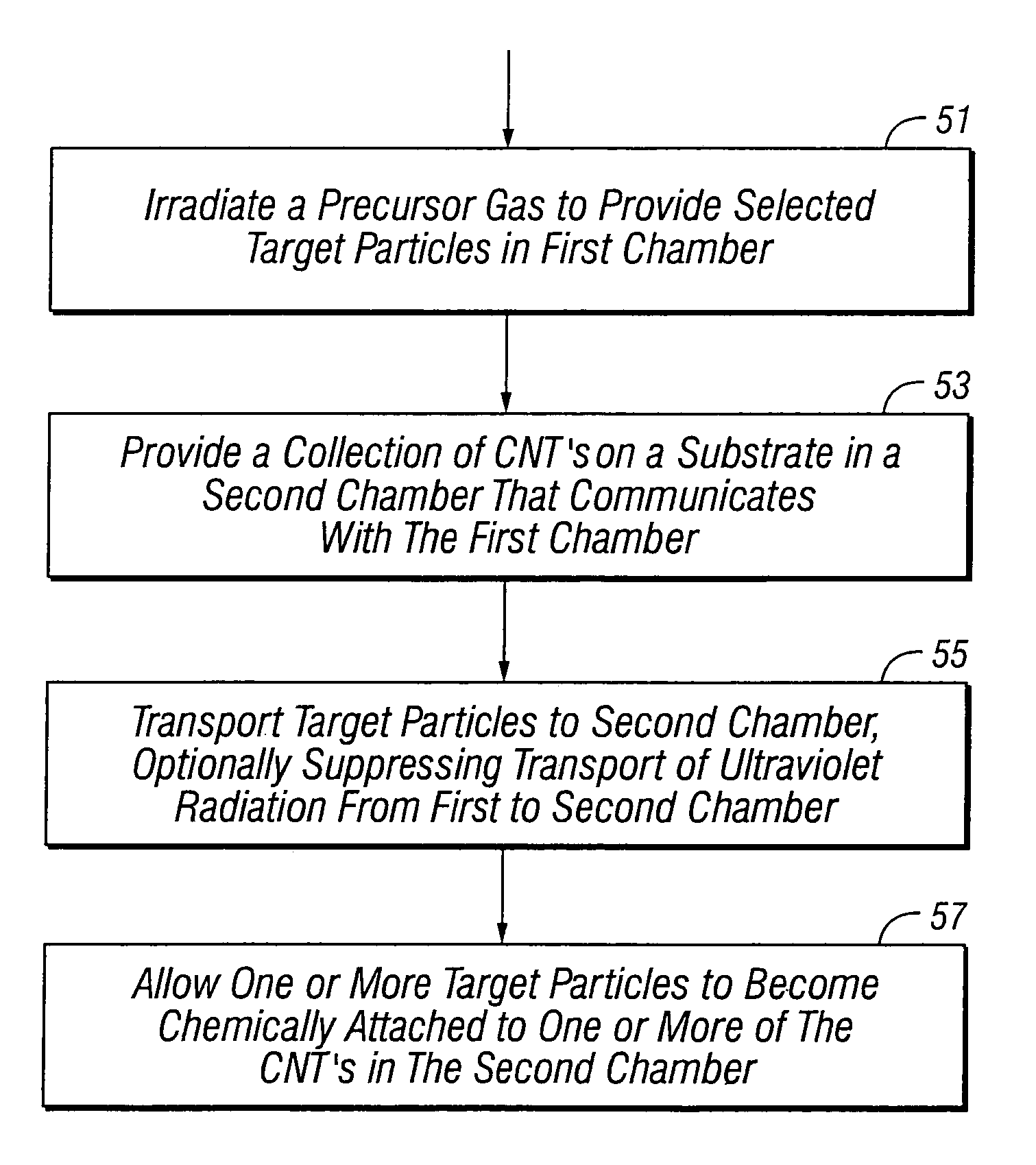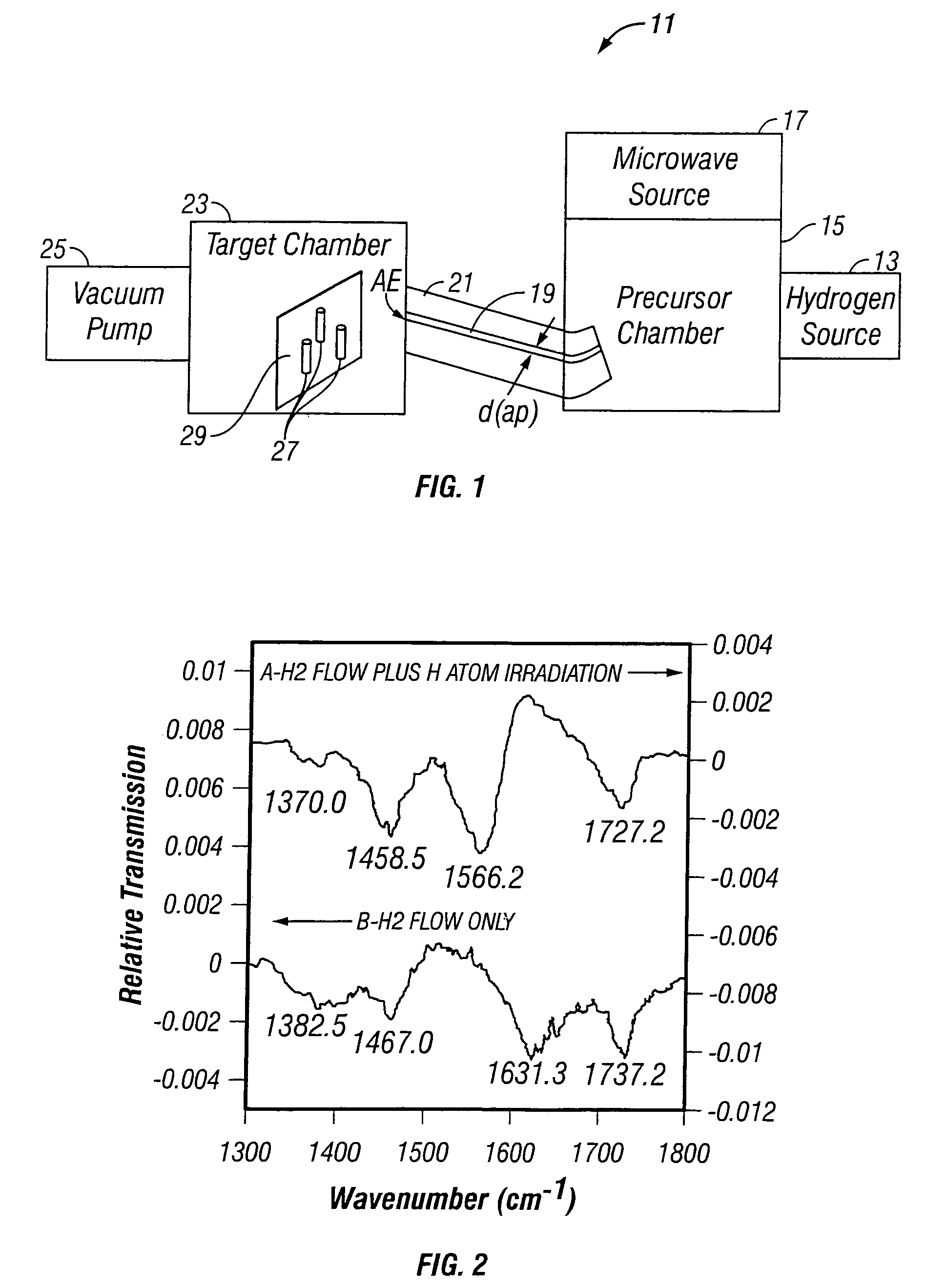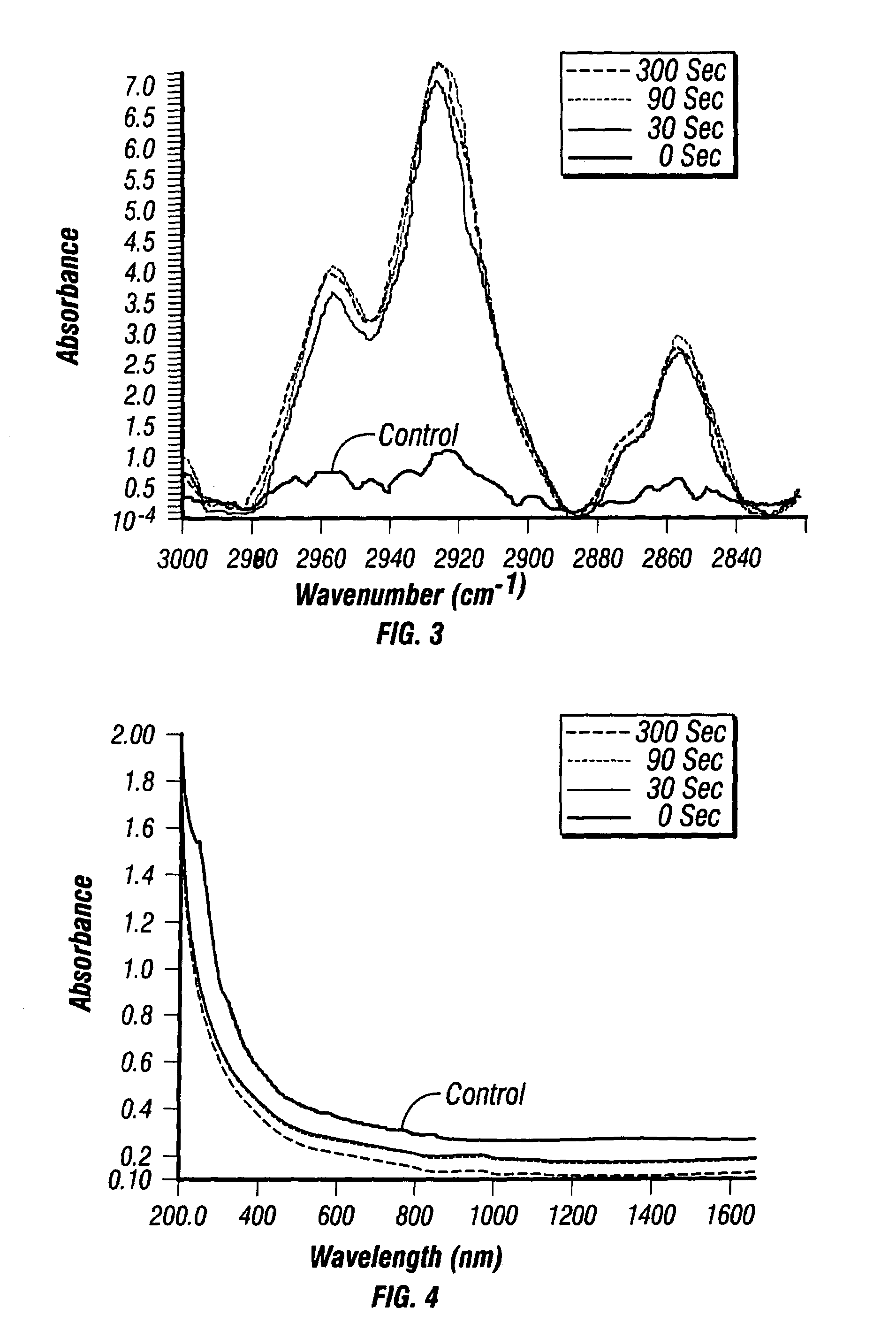Functionalization of carbon nanotubes
- Summary
- Abstract
- Description
- Claims
- Application Information
AI Technical Summary
Benefits of technology
Problems solved by technology
Method used
Image
Examples
Embodiment Construction
[0013]FIG. 1 illustrates a system 11 for practicing the invention to provide hydrogen as the species for functionalization of the CNTs. The system 11 includes a precursor source 13 that feeds hydrogen (e.g., molecular hydrogen, with a purity of 99.9999 percent or better) to a partially evacuated precursor chamber 15. Molecular hydrogen in the precursor chamber 15 is irradiated by a microwave source or other suitable radiation source 17, for example, a McCarroll cavity operating at 2.45 GHz and powered by an Opthos microwave generator. The radiation source 17 provides sufficient radiant energy to produce a cold plasma, in which the free electrons, with typical temperatures Te≈a few electron volts (1 eV corresponds to T=11,604 K), are much hotter than the resulting partially ionized gas, which has typical temperatures Tg≈350-1000 K. This discharge produces electrons by ionization and radicals, especially atomic hydrogen as a precursor particle, by dissociation.
[0014]Part of the atomic...
PUM
| Property | Measurement | Unit |
|---|---|---|
| Time | aaaaa | aaaaa |
| Temperature | aaaaa | aaaaa |
| Pressure | aaaaa | aaaaa |
Abstract
Description
Claims
Application Information
 Login to View More
Login to View More - R&D
- Intellectual Property
- Life Sciences
- Materials
- Tech Scout
- Unparalleled Data Quality
- Higher Quality Content
- 60% Fewer Hallucinations
Browse by: Latest US Patents, China's latest patents, Technical Efficacy Thesaurus, Application Domain, Technology Topic, Popular Technical Reports.
© 2025 PatSnap. All rights reserved.Legal|Privacy policy|Modern Slavery Act Transparency Statement|Sitemap|About US| Contact US: help@patsnap.com



